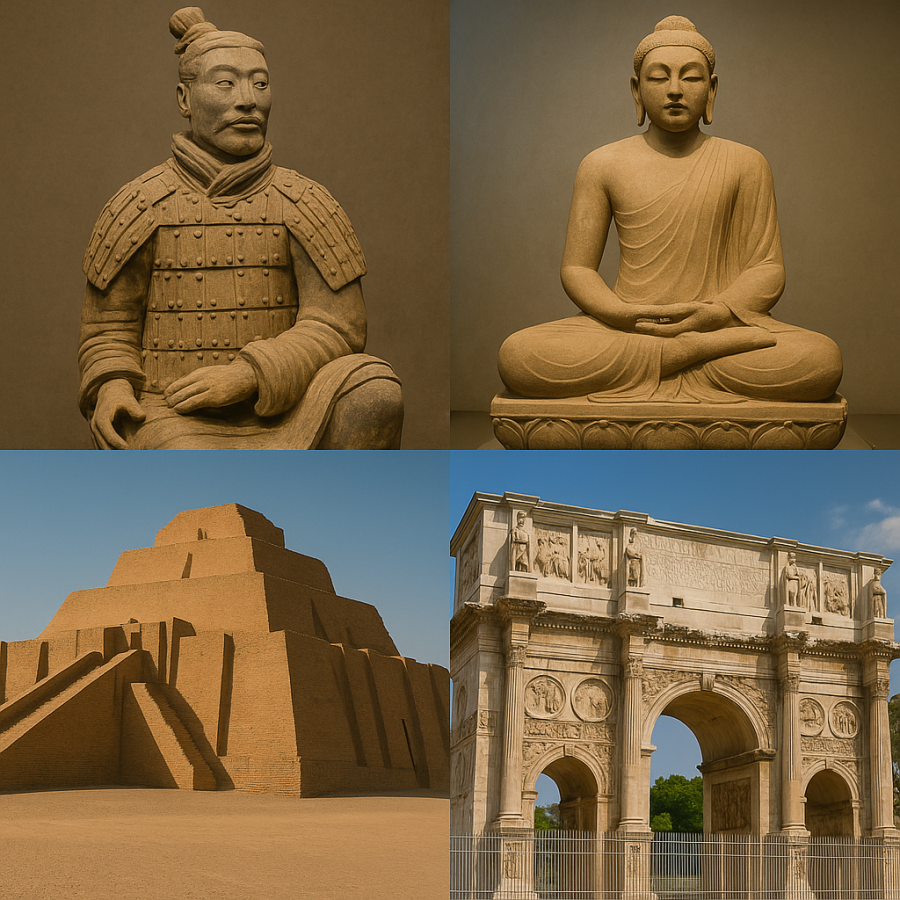Uncovering Art History
Ancient Art and Its Return in the Renaissance
19 Apr 2025

The Renaissance, one of the most significant periods in the history of European culture, was marked by a spectacular return to the values and ideals of ancient Greco-Roman art.
After centuries in which Europe was dominated by the religious spirit and the austere aesthetics of the Middle Ages, artists and thinkers of the Renaissance rediscovered the beauty, balance and rationality of the ancient world, transforming them into fundamental sources of inspiration.
Rediscovering Antiquity
One of the most important characteristics of the Renaissance was the deep interest in classical culture. Humanists – the scholars of the time – passionately studied the texts of ancient philosophers, poets and architects.
Greek and Roman manuscripts, such as De Architectura by Vitruvius, were copied and analyzed, and Roman ruins were carefully researched to understand the techniques and proportions used by the old masters. This return to ancient sources was not just a simple imitation, but a creative reinterpretation, adapted to the values and sensibilities of the time.
Reflection of ancient art in the Renaissance
Renaissance art borrows extensively from the forms and themes of the ancient world. In painting and sculpture, the emphasis is again on the human body, represented with remarkable anatomical accuracy and idealized beauty, inspired by Greek sculpture. The nude returns as a form of artistic expression, not as an object of shame, but as a symbol of divine perfection.
An emblematic example is the sculpture "David" by Michelangelo - a work that combines the strength, balance and aesthetic ideal of antiquity with the expressiveness of the Renaissance. Also, paintings such as "The Birth of Venus" by Botticelli bring Greco-Roman mythology to the forefront, reaffirming the interest in classical themes.
Renaissance in architecture
Renaissance architecture is strongly influenced by the classical style, being characterized by symmetry, harmonious proportions and the use of classical order: Doric, Ionic and Corinthian columns, pediments and domes. A notable example is the cathedral of Santa Maria del Fiore in Florence, whose dome, designed by Filippo Brunelleschi, is inspired by the great Roman Pantheon.
By rediscovering the building principles of antiquity, Renaissance architects were able to combine functionality with elegance and give European cities a classical and imposing image.
The Artistic Heritage of Antiquity
By returning to ancient art, the Renaissance opened a new path in the history of European culture. It not only restored the dignity of art and science, but also laid the foundations of modernity by reaffirming humanist values: reason, freedom of thought, and the ideal of universal beauty.
This way, the heritage of ancient Greece and Rome was not only preserved, but revived with new force, becoming the foundation for the cultural development of modern Europe.
* * *
Story by Cosmina Marcela Oltean (Gallery curator & Art writer)
All news